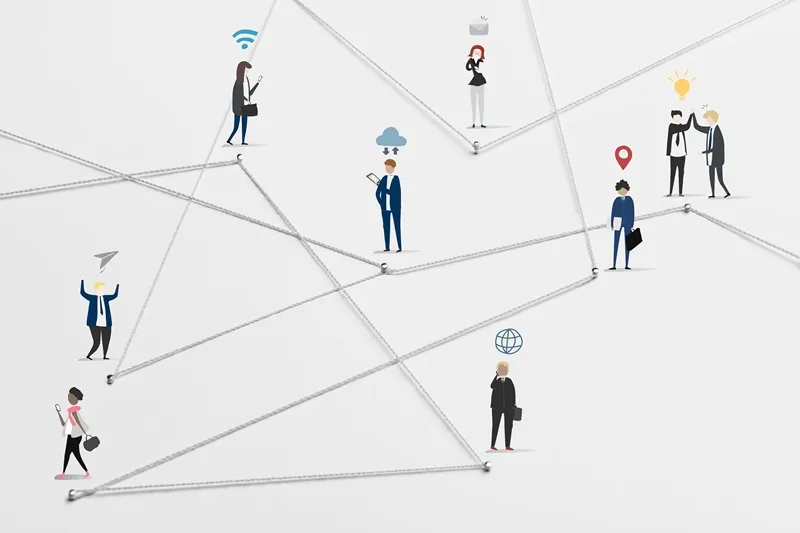Introduction
In today’s rapidly evolving digital landscape, where remote work has become the norm, the ability to communicate effectively across time zones and geographical barriers is paramount. Asynchronous communication has emerged as a powerful tool for fostering successful remote collaboration, enabling teams to stay connected and productive, even in the absence of real-time interactions.
What is Asynchronous Communication?
Asynchronous communication refers to the exchange of information that does not happen in real-time. Unlike synchronous communication, where all participants are present and engaged simultaneously (such as in a video call or a face-to-face meeting), asynchronous communication allows individuals to respond and contribute at their own convenience, without the need for immediate responses.
Asynchronous vs. Synchronous Communication
The key difference between asynchronous and synchronous communication lies in the timing of the interaction. Synchronous communication requires all participants to be present and engaged at the same time, whereas asynchronous communication allows for a more flexible, self-paced exchange of information.
Synchronous Communication:
- Real-time interaction (e.g., video calls, in-person meetings)
- Immediate responses and feedback
- Coordinated schedules and availability
Asynchronous Communication:
- Delayed responses and feedback (e.g., emails, chat messages, project management tools)
- Flexible timing and self-paced engagement
- Ability to access and respond to information at one’s convenience
Advantages of Asynchronous Communication
Asynchronous communication offers several advantages, making it an attractive choice for remote teams and organizations. Firstly, it increases flexibility and productivity. Team members can manage their time effectively, responding to messages and collaborating on projects at their own pace, without the constraints of real-time interactions. Additionally, asynchronous communication improves accessibility and inclusivity. It accommodates team members across different time zones, work schedules, and personal commitments, ensuring equal opportunity for everyone to contribute.
Moreover, it enhances documentation and knowledge sharing. Written messages and project updates create a searchable, accessible record of discussions and decisions, facilitating knowledge sharing and institutional memory. Furthermore, asynchronous communication reduces cognitive load and distractions. It minimizes constant context-switching and interruptions, enabling team members to focus on their tasks and maintain a state of deep work. Lastly, it promotes increased thoughtfulness and reflection. By encouraging team members to carefully consider their responses, asynchronous communication leads to more thoughtful and well-crafted contributions.
Asynchronous Communication Tools and Platforms
To effectively implement asynchronous communication in remote teams, a variety of tools and platforms are available, each offering unique features and capabilities:
- Project Management Tools: Tools like Metridev allow teams to collaborate on tasks, share updates, and track progress asynchronously.
- Messaging and Chat Platforms: Applications such as Microsoft Teams enable real-time chat. As well as the ability to post updates, share files, and engage in threaded discussions.
- Collaborative Document Platforms: Tools like Google Docs facilitate the creation, editing, and sharing of documents, enabling asynchronous collaboration.
- Video and Audio Messaging: Solutions like Viostream enable team members to record and share video or audio messages. Those can be viewed and responded to at the recipient’s convenience.
- Knowledge Sharing Platforms: Wikis, internal blogs, and knowledge management systems provide a centralized repository for team resources, policies, and institutional knowledge.

Implementing Asynchronous Communication in Remote Teams
To effectively implement asynchronous communication in remote teams, organizations should consider the following strategies:
- Establish Clear Policies and Expectations: Develop guidelines for asynchronous communication. Outline response times, communication channels, and best practices to ensure a consistent and productive workflow.
- Encourage Proactive Communication: Foster a culture where team members feel empowered to share updates, ask questions, and provide feedback without the need for immediate responses.
- Utilize Asynchronous Meeting Formats: Replace some synchronous meetings with asynchronous alternatives, such as pre-recorded updates, collaborative documents, or discussion threads.
- Invest in Appropriate Tools and Training: Provide team members with the necessary tools and training. These will help to effectively leverage asynchronous communication platforms, ensuring seamless integration into their workflow.
- Promote Inclusive Participation: Ensure that all team members, regardless of their location or time zone, have equal opportunities to contribute and engage in asynchronous discussions.
- Emphasize Transparency and Visibility: Encourage team members to document their work, decisions, and progress, making this information accessible to the entire team.
What is Asynchronous with Example?
Asynchronous communication can be observed in various scenarios, such as:
- Email: When you send an email to a colleague, you don’t expect an immediate response. The recipient can read and respond to the message at their convenience.
- Project Management Tools: In a remote team, members can update project tasks, leave comments, and provide feedback on shared documents without the need for real-time collaboration.
- Messaging Platforms: Chat applications like Microsoft Teams allow team members to post updates and share files. Additionally, to engage in discussions that can be accessed and responded to at any time.
- Video and Audio Messaging: These tools enable team members to record and share asynchronous video or audio messages, which can be viewed and responded to by others on their own schedule.
- Knowledge Sharing Platforms: Internal wikis, blogs, or documentation repositories. These allow team members to contribute and access information at their convenience, fostering a culture of continuous learning and knowledge sharing.
Best Practices for Effective Asynchronous Communication
To ensure the success of asynchronous communication in remote teams, consider the following best practices. Firstly, establish clear communication protocols. Develop guidelines for response times, preferred communication channels, and expectations for asynchronous interactions. Additionally, encourage proactive engagement. Foster a culture where team members feel empowered to share updates, ask questions, and provide feedback without the need for immediate responses. Moreover, promote transparency and visibility. Encourage team members to document their work, decisions, and progress, making this information accessible to the entire team. Furthermore, utilize appropriate tools and technologies. Invest in the right asynchronous communication tools and platforms to support your team’s needs. Also to provide training to ensure effective adoption and usage.
Additionally, emphasize inclusive participation. Ensure that all team members, regardless of their location or time zone, have equal opportunities to contribute and engage in asynchronous discussions. Furthermore, encourage thoughtful and reflective communication. Remind team members to take the time to carefully consider their responses, leading to more meaningful and impactful contributions. Moreover, provide timely feedback and acknowledgment. Respond to team members’ contributions in a timely manner, acknowledging their efforts and providing constructive feedback to maintain engagement and momentum.
Additionally, manage expectations and boundaries. Set clear expectations around response times and availability, and encourage team members to establish healthy boundaries to prevent burnout. Furthermore, foster a collaborative and supportive culture. Cultivate an environment where team members feel comfortable asking questions, sharing ideas, and providing support to one another. Even in the absence of real-time interactions. Lastly, continuously evaluate and improve. Regularly assess the effectiveness of your asynchronous communication practices, gather feedback from team members, and make adjustments to optimize the process.
Overcoming Challenges in Asynchronous Communication
While asynchronous communication offers numerous benefits, it can also present some challenges that organizations should be prepared to address:
- Lack of Immediate Feedback: The absence of real-time feedback can sometimes lead to misunderstandings or delays in decision-making.
- Potential for Miscommunication: Without the visual and auditory cues present in synchronous communication, the risk of misinterpretation or misunderstanding increases.
- Maintaining Engagement and Momentum: Keeping team members engaged and motivated in the absence of face-to-face interactions can be more challenging.
- Time Zone Differences: Coordinating asynchronous communication across multiple time zones can be complex, requiring careful planning and consideration.
- Technological Limitations: Reliance on various communication tools and platforms can introduce technical issues or compatibility problems.
- Blurred Work-Life Boundaries: The flexibility of asynchronous communication can sometimes lead to an “always-on” mentality, blurring the line between work and personal time.
To overcome these challenges, organizations should:
- Establish clear communication protocols and expectations
- Encourage regular check-ins and face-to-face interactions (when feasible)
- Provide training and support for effective asynchronous communication
- Implement strategies to maintain team cohesion and engagement
- Manage time zone differences proactively
- Ensure reliable and user-friendly communication tools
- Encourage work-life balance and healthy boundaries
What is Asynchronous Mode in Computer Networks?
In the context of computer networks, asynchronous mode refers to a communication method where data is transmitted without a fixed timing relationship between the transmitter and the receiver. This means that the transmitter and receiver do not need to be synchronized, and data can be sent and received at their own pace.
In an asynchronous network communication, the transmitter sends data in the form of frames or packets. The receiver processes the data independently, without the need for a constant, predetermined timing pattern. This allows for more flexibility and efficiency in data transmission, as the transmitter does not have to wait for the receiver to be ready before sending data.
Some key characteristics of asynchronous mode in computer networks include:
- Flexible Timing: The transmitter and receiver can operate at different speeds. Also, they can transmit or receive data at their own pace, without the need for strict synchronization.
- Framing and Formatting: Data is typically transmitted in the form of frames or packets, with additional information (such as start and stop bits, parity bits, and framing characters). These help to identify the beginning and end of each data unit.
- Handshaking Protocols: Asynchronous communication often involves handshaking protocols. The transmitter and receiver exchange control signals to coordinate the data transfer and ensure reliable communication.
- Error Detection and Correction: Asynchronous communication protocols often include mechanisms for error detection and correction, such as parity bits or checksum calculations. These help to ensure the integrity of the transmitted data.
Asynchronous mode is commonly used in various communication scenarios, such as serial communication (e.g., RS-232 and USB), modem communication, and some industrial and embedded systems, where the flexibility and simplicity of asynchronous communication are valuable.
Comparison between Synchronous and Asynchronous Communication
The key differences between synchronous and asynchronous communication can be summarized as follows:
| Characteristic | Synchronous Communication | Asynchronous Communication |
|---|---|---|
| Timing | All participants must be present and engaged at the same time | Participants can respond and contribute at their own convenience |
| Interaction | Real-time, with immediate responses and feedback | Delayed responses and feedback |
| Coordination | Requires coordinated schedules and availability | Allows for flexible timing and self-paced engagement |
| Examples | Video calls, in-person meetings | Emails, chat messages, project management tools |
| Advantages | Immediate feedback and decision-making | Increased flexibility, productivity, and inclusivity |
| Disadvantages | Scheduling challenges, limited accessibility | Potential for miscommunication, maintaining engagement |
Conclusion
As the landscape of work continues to evolve, the ability to effectively communicate and collaborate in a remote environment has become increasingly crucial. Asynchronous communication offers a powerful solution, enabling teams to stay connected, productive, and engaged, even in the absence of real-time interactions.
By embracing the advantages of asynchronous communication, organizations can foster a more inclusive, flexible, and efficient remote work environment, where team members can thrive and collaborate at their own pace. By implementing best practices, overcoming challenges, and effectively managing time zones, remote teams can unlock the full potential of asynchronous communication and achieve greater success in their collaborative efforts.
Discover how asynchronous communication can revolutionize your remote team’s collaboration. Read our article Failure in Time: Unlocking Growth and Success to learn more.









Leave a Reply